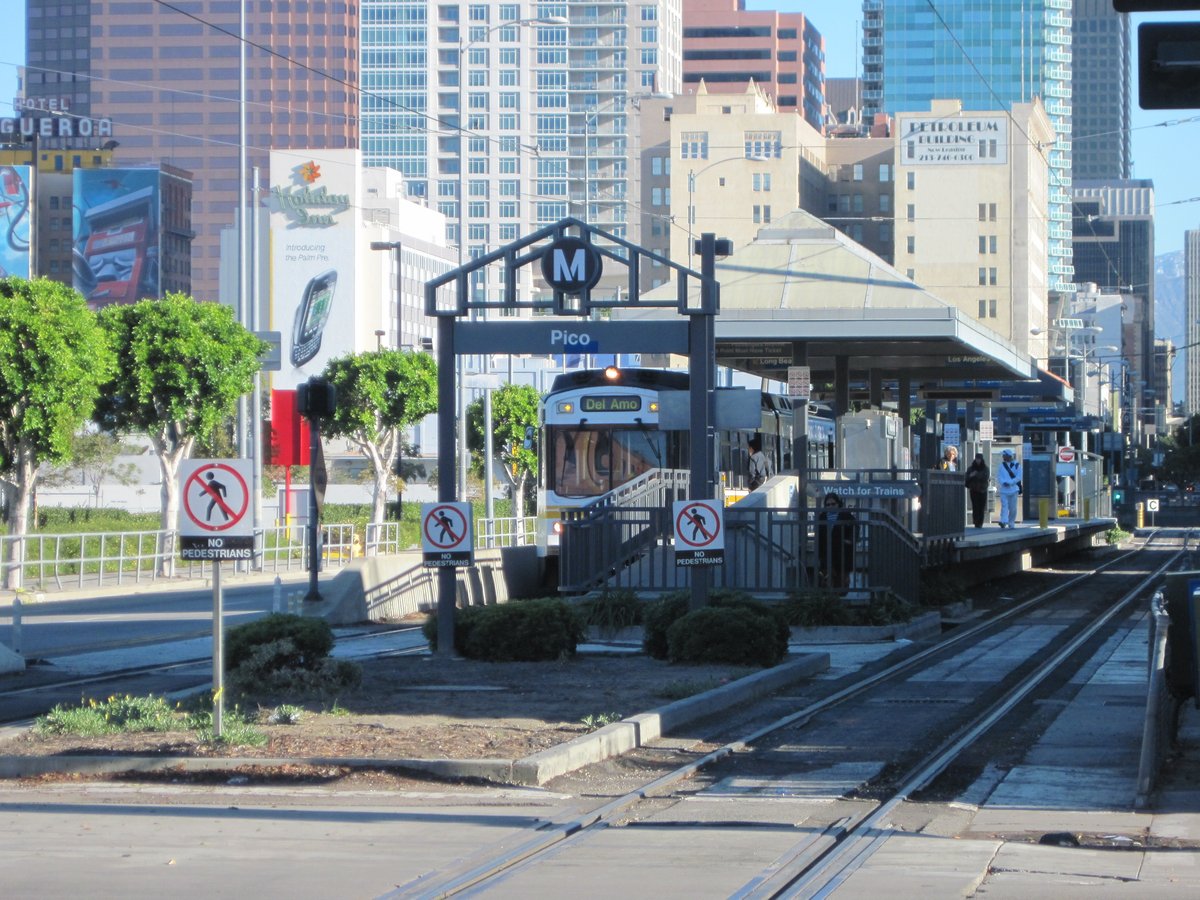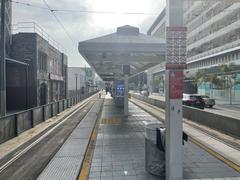Pico Los Angeles Visiting Hours, Tickets, and Historical Sites Guide
Date: 15/06/2025
Introduction
Pico, Los Angeles, comprises a dynamic collection of neighborhoods, notably Pico-Union, each reflecting the city’s layered history, multicultural vibrancy, and urban evolution. From the indigenous Tongva village of Geveronga, through Spanish colonialism, to waves of global immigration, Pico’s story is woven into its streets, architecture, and community institutions (Wikipedia; PBS SoCal). Named for Pío de Jesús Pico, the last Mexican governor of California, the area is a living archive where history, culture, and contemporary life intersect.
This guide provides an in-depth look at Pico’s heritage, visitor logistics, and practical tips. Whether you’re a history enthusiast, an architecture buff, or a culinary explorer, Pico and Pico-Union deliver an authentic Los Angeles experience that bridges the past and present (Pico Union Project; LA Eater).
Table of Contents
- Discover Pico-Union: A Historic Neighborhood
- Early Foundations and the Legacy of Pío Pico
- Urban Development: From Fields to Streetcar Suburb
- Architectural Diversity and Historic Preservation
- Waves of Migration and Multicultural Transformation
- Notable Landmarks and Highlights
- Visiting Pico Union: Practical Information
- Preservation Challenges and Community Advocacy
- Visual and Interactive Resources
- Frequently Asked Questions
- Exploring Pico Boulevard: Attractions and Districts
- Pico Neighborhood Visitor Guide
- Summary and Final Tips
- References and Further Reading
Discover Pico-Union: A Historic Neighborhood
Pico-Union stands as a testament to Los Angeles’s evolving identity. It is a destination for those interested in the city’s rich past, vibrant present, and diverse communities. As one of LA’s earliest neighborhoods, it’s distinguished by its historic architecture, immigrant enclaves, and commitment to cultural preservation.
Early Foundations and the Legacy of Pío Pico
The roots of Pico-Union stretch back to El Pueblo de Los Angeles, established in 1781 by settlers of mixed African, Indigenous, and European descent (PBS SoCal). The neighborhood is named after Pío de Jesús Pico, a pivotal figure in California’s transition from Mexican to American governance, and a symbol of the region’s multicultural foundation.
Urban Development: From Fields to Streetcar Suburb
By the late 19th century, Pico-Union shifted from agricultural land to one of LA’s first streetcar suburbs. The influx of Victorian homes and early 20th-century apartment buildings reflected the city’s rapid growth and ambitions (L.A. Conservancy PDF). The area’s proximity to downtown and accessibility via streetcar made it a desirable residential address, a legacy visible in today’s preserved streetscapes.
Architectural Diversity and Historic Preservation
Pico-Union’s architectural richness ranges from grand mansions on Alvarado Terrace to distinctive period apartments. In 2004, its designation as LA’s nineteenth Historic Preservation Overlay Zone (HPOZ) protected much of its built heritage (L.A. Conservancy). Self-guided walking tours are available for those wishing to explore the district’s architectural gems.
Waves of Migration and Multicultural Transformation
Successive waves of immigrants have defined Pico-Union’s identity. Once home to European and Jewish communities, it became a major entry point for Central American immigrants, especially Salvadorans and Guatemalans, in the late 20th century (Pico Union Neighborhood Council). Today, it is celebrated for its vibrant Latino majority and multicultural tapestry, reflected in its businesses, festivals, and street art.
Notable Landmarks and Highlights
- Alvarado Terrace Historic District: Early 20th-century mansions; best explored during daylight.
- Pico House: Historic 19th-century hotel, emblematic of LA’s early modern era.
- Historic Churches & Community Centers: Many are open to visitors and frequently host cultural events.
Visiting Pico Union: Practical Information
- Visiting Hours: Most sites are accessible from dawn to dusk. Always check specific venues for unique hours.
- Tickets: Self-guided tours via Los Angeles Conservancy are free (L.A. Conservancy PDF).
- Accessibility: The area is walkable, with public transit via Metro buses and nearby subway stations. Sidewalks are generally accessible for those with mobility needs.
- Guided Tours: Offered seasonally by local organizations—check the Pico Union Neighborhood Council for up-to-date schedules.
- Best Time to Visit: Spring and fall offer comfortable weather and active event calendars.
Preservation Challenges and Community Advocacy
Pico-Union faces pressures from urban development, such as high-rise proposals like the Albany Project. Local groups strive to balance preservation with growth, ensuring the area’s historic and cultural integrity endures (L.A. Conservancy).
Visual and Interactive Resources
Enhance your visit by accessing virtual tours, interactive maps, and photo galleries via the Los Angeles Conservancy and Pico Union Neighborhood Council websites. These resources offer valuable previews and enrich on-the-ground exploration.
Frequently Asked Questions
Q: Are Pico-Union’s historic sites free to visit?
A: Most walking tours are free; private properties may require advance arrangements.
Q: What’s the best way to get to Pico-Union?
A: Metro buses and the subway serve the area; it’s also pedestrian-friendly.
Q: Is the neighborhood safe for tourists?
A: Generally yes, especially during the day. Exercise standard urban caution.
Q: Are guided tours available year-round?
A: Tours are often seasonal—check local websites for current offerings.
Q: Can I take photos?
A: Yes, in public spaces. Please respect private property and residents’ privacy.
Exploring Pico Boulevard: Attractions and Districts
Pico Boulevard is LA’s cultural artery, stretching from Santa Monica’s coast through diverse communities to Downtown. Along its route, distinct neighborhoods offer unique experiences:
Santa Monica: Murals, Markets, & Community
- Highlights: Public murals, Virginia Avenue Park’s farmers market, McCabe’s Guitar Shop (Santa Monica Official Site)
- Access: Three Metro E Line stations
Sawtelle & West LA: International Eats
- Cuisine: Japanese ramen, Persian bakeries
- Landmarks: Former Westside Pavilion tech campus
Pico-Robertson: Jewish Heritage
- Features: Kosher markets, synagogues, family-friendly festivals (Plugged In Travel)
Little Ethiopia & Wilshire Vista: African & Global Flavors
- Cuisine: Ethiopian classics at Messob and Rosalind’s
Koreatown: Nightlife & Culture
- Attractions: Korean BBQ, karaoke, festivals
Byzantine-Latino Quarter & Pico-Union: Central American Roots
- Highlights: Salvadoran pupuserias, historic houses (LA Times)
Downtown: Entertainment & Shopping
- Venues: Crypto.com Arena, LA Live, Fashion District (Wikipedia)
Street Art, Food, and Nightlife
Pico Boulevard is renowned for its murals and vibrant food scene, from Little Ethiopia’s unique eateries to Santa Monica’s classic Mexican fare. Live music venues like McCabe’s Guitar Shop and Pip’s on La Brea make for lively evenings (LA Times).
Accessibility & Transportation
Pico Boulevard is served by Metro E Line, bus routes, and is walkable in many stretches. Parking can be tight; public transit or rideshares are recommended (Santa Monica Official Site).
Pico Neighborhood Visitor Guide
Getting Around
- Public Transit: Metro Rail (Expo Line’s Pico Station), buses, DASH shuttles.
- Driving: Expect heavy traffic and limited parking.
- Cycling/Walking: Feasible for short trips; avoid biking in heavy traffic.
Safety
- Daytime is generally safe; avoid quiet areas at night.
- Keep valuables secure and blend in with locals.
Accommodation
- Few hotels within Pico; Downtown LA offers more choices with easy transit connections.
Dining
- Diverse food options: Salvadoran, Mexican, Korean, and more (LA Eater).
Essential Tips
- Best Time: Mild climate; June features festivals and events.
- Navigation: Use apps like Google Maps and LA Metro.
- Health & Security: Stay hydrated, keep emergency contacts handy.
Accessibility
- Most transit and public spaces are accessible.
Money
- Credit/debit cards widely accepted; carry some cash.
Local Laws
- Alcohol: 21+; marijuana: 21+ on private property.
Emergency
- Dial 911 for emergencies; nearest hospital: Good Samaritan Hospital.
Summary and Final Tips
Pico and Pico-Union are among LA’s most compelling neighborhoods, with deep historical roots and vibrant cultural life (PBS SoCal; Wikipedia). Visitors can explore historic districts, savor multicultural cuisine, and engage with ongoing community events. The area’s accessibility, walkability, and strong preservation ethos make it both welcoming and relevant (L.A. Conservancy). Use public transit, support local businesses, and plan your visit around events for the most rewarding experience (Los Angeles Conservancy; Pico Union Neighborhood Council).
Begin your journey today—explore more historic sites in Los Angeles and stay connected for updates and insider tips.
References and Further Reading
- PBS SoCal, The Life and Times of Pio Pico, Last Governor of Mexican California
- L.A. Conservancy, Pico-Union Historic Preservation Overlay Zone
- Wikipedia, Pico-Union, Los Angeles
- Pico Union Project, About Pico Union
- Santa Monica Official Site, Pico Boulevard Neighborhoods
- Los Angeles Times, Walking All of Pico Boulevard in a Day
- LA Eater, Best Los Angeles Restaurants
- Zipdatamaps, Pico-Union
- The Evolista, Visiting Los Angeles
- The Broke Backpacker, Is Los Angeles Safe?































































































































